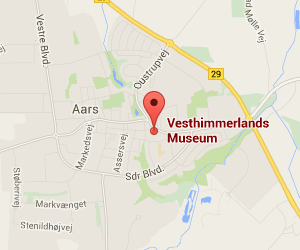UNESCO
What is World Heritage?
World Heritage is defined as natural and/or cultural heritage of Outstanding Universal Value (OUV). These are often buildings, cities, natural areas or cultural landscapes. To be included on the World Heritage List, the nominated subject must live up to the criteria set by UNESCO for admission. In addition, it must be genuine and well-preserved.
Hopefully, the five, Danish ring fortresses will be on UNESCO's distinguished list of places of unique value to all of humanity in 2022. A joint application has long been under preparation and was sent in early 2021. The application is based on the following two UNESCO citeria:
Criterion (iii): Bear a unique or at least exceptional testimony to a cultural tradition or to a civilization which is living or which has disappeared.
Criterion (iv): Be an outstanding example of a type of building, architectural or technological ensemble or landscape which illustrates (a) significant stage(s) in human history.
Viking-Age Ring Fortresses is a coherent group of fortified defensive enclosures that was constructed in 975-980 CE across the Jutland peninsula and the islands Funen and Zealand. Each stronghold of the strategically planned system was not far from open water and was positioned near important land and sea routes. Moreover, all conform to a distinctive architectonic masterplan based on precise geometrical and symmetrical form, an assertion of functional and symbolic expression of state power across clearly demarcated territory.
World Heritage is defined as natural and/or cultural heritage of Outstanding Universal Value (OUV). These are often buildings, cities, natural areas or cultural landscapes. To be included on the World Heritage List, the nominated subject must live up to the criteria set by UNESCO for admission. In addition, it must be genuine and well-preserved.
Hopefully, the five, Danish ring fortresses will be on UNESCO's distinguished list of places of unique value to all of humanity in 2022. A joint application has long been under preparation and was sent in early 2021. The application is based on the following two UNESCO citeria:
Criterion (iii): Bear a unique or at least exceptional testimony to a cultural tradition or to a civilization which is living or which has disappeared.
Criterion (iv): Be an outstanding example of a type of building, architectural or technological ensemble or landscape which illustrates (a) significant stage(s) in human history.
Viking-Age Ring Fortresses is a coherent group of fortified defensive enclosures that was constructed in 975-980 CE across the Jutland peninsula and the islands Funen and Zealand. Each stronghold of the strategically planned system was not far from open water and was positioned near important land and sea routes. Moreover, all conform to a distinctive architectonic masterplan based on precise geometrical and symmetrical form, an assertion of functional and symbolic expression of state power across clearly demarcated territory.
Together the fortresses form the largest monuments left from the Viking Age, the most impressive materialisation of a new type of centralised governance in late tenth century southern Scandinavia. Their coordinated construction under King Harald "Bluetooth" Gormsson (r. 958-987 CE), as part of his wider infrastructure works (e.g., the Danevirke reinforcements and the Ravning Enge Bridge), plays an important role in the unification of the Danish realm and the official religious and societal transformation from pagan tribal Scandinavian culture into a unified Christian state society.
Spread across what is now Denmark, northern Germany, southern Sweden and Norway, this heralded the formation of the Nordic States and the ultimate transition of the Viking Age into the Scandinavian Middle Ages.
Viking-Age Ring Fortresses is a group of outstanding monumental military building works without parallel or obvious precursors in Scandinavia; it is also exceptional as a system within the wider European Early Medieval context. The strategically positioned ensemble was constructed in 975-980 CE in a regular, strategic pattern across the Jutland peninsula and the is lands Funen and Zealand. The system stands out as notable Viking-Age building works and is testimony to a strong central power in the emerging Danish kingdom, an antecedent to the Nordic States and the end of the Viking Age.
Viking-Age Ring Fortresses is a group of outstanding monumental military building works without parallel or obvious precursors in Scandinavia; it is also exceptional as a system within the wider European Early Medieval context. The strategically positioned ensemble was constructed in 975-980 CE in a regular, strategic pattern across the Jutland peninsula and the is lands Funen and Zealand. The system stands out as notable Viking-Age building works and is testimony to a strong central power in the emerging Danish kingdom, an antecedent to the Nordic States and the end of the Viking Age.


